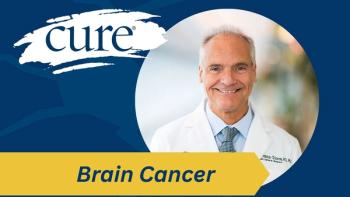
Subtype of Triple-Negative Breast Cancer Responds to Neoadjuvant Avastin
The addition of Avastin (bevacizumab) to standard neoadjuvant chemotherapy significantly improved pathologic complete response rates in women with basal-like breast cancer compared with non-basal-like subtypes.
The addition of Avastin (bevacizumab) to standard neoadjuvant chemotherapy significantly improved pathologic complete response (pCR) rates in women with basal-like breast cancer compared with non-basal-like subtypes, according to an analysis of the CALGB 40603 trial presented at the 2014 San Antonio Breast Cancer Symposium (SABCS).
In an earlier analysis of the CALGB 40603 trial, the addition of carboplatin or Avastin to standard neoadjuvant chemotherapy was shown to significantly increase pCR rates in women with triple-negative breast cancer (TNBC). In the updated analysis presented at SABCS in December, a distinct interaction between subtype and pCR was established, with basal-like subtypes responding favorably to Avastin. Moreover, expression of mRNA gene signatures of high proliferation, low estrogen expression or high TP53 expression was associated with higher pCR rates with neoadjuvant Avastin.
"The addition of either carboplatin or bevacizumab to standard neoadjuvant therapy was associated with significantly higher pCR breast and pCR breast and axilla rates in patients with basal-like cancers," said lead investigator William M. Sikov, MD, associate professor of medicine at the Alpert Medical School of Brown University in Providence, Rhode Island. "There was an interaction between subtype—that is basal-like and non-basal-like—and the size of pCR increment only for bevacizumab."
In the study, 443 patients with stage 2 or 3 TNBC were treated with Taxol (paclitaxel) plus either Avastin, carboplatin or the combination of the two.
Following neoadjuvant therapy, patients went on to receive surgery or radiation treatment. Adjuvant systemic therapy was not planned. Biopsy samples were collected for intrinsic subtype analysis prior to the initiation of therapy. Across all samples, a majority were identified as basal-like. The pCR rate across all treatment arms did not differ by subtype, at 54 percent in basal-like and 52 percent in non-basal-like.
In patients with basal-like cancers, the addition of Avastin improved pCR in the breast from 45 percent with Taxol alone to 64 percent with Avastin. In the breast and axilla combined, the pCR with Avastin was 57 percent versus 43 percent with Taxol alone. A clear benefit was not seen for adding Avastin to Taxol in the non-basal-like subtype.
In the basal-like subtype specifically, the addition of carboplatin to Taxol demonstrated a pCR rate in the breast of 61 percent versus 47 percent with Taxol alone. In the breast and axilla, the pCR rate with carboplatin was 56 percent versus 43 percent with Taxol alone. These outcomes were similar in patients with non-basal-like subtypes.
"For carboplatin, the benefit of its addition on pathologic complete response was equivalent in the basal-like and non-basal-like patients," said Sikov. "There was no significant interaction between subtype and the benefit of adding carboplatin. This doesn't mean that carboplatin was of no benefit in the basal-like subtype, there was simply no accentuation of that benefit in the basal-like subtype compared with non-basal-like cancer."




